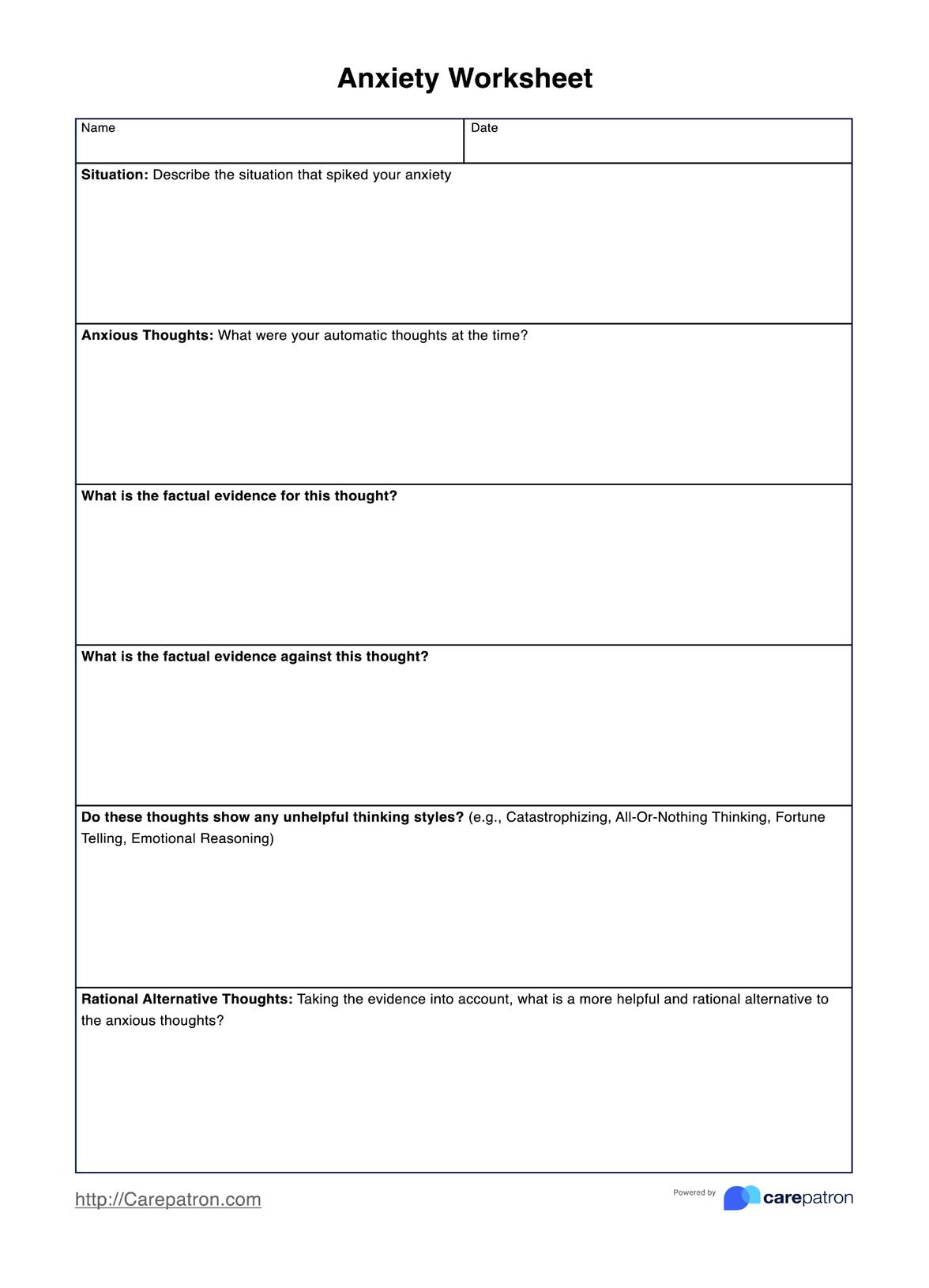Unhelpful thinking styles are common traps many of us fall into when we try to think about something when we have high anxiety levels or strong negative emotions. These thinking styles include catastrophizing, all-or-nothing thinking, emotional reasoning, over-generalizations, or jumping to conclusions.

Anxiety Worksheets
Challenge your clients’ anxious thoughts and create rational and helpful alternatives with our Anxiety Worksheet. Engage your clients in their treatment, and empower them as they learn to recognize and dispute their anxious thoughts.
Anxiety Worksheets Template
Commonly asked questions
While for some of your clients, it may be necessary for you to offer a helping hand with examples of unhelpful thinking styles or evidence against an anxious thought, this worksheet is designed to be completed by your clients rather than you as their mental health practitioner. As such, it may be a collaborative effort, or your client may wish to complete it entirely independently.
Considering factual evidence for and against a particular thought is part of cognitive restructuring, which aims to replace maladaptive thoughts with more balanced, rational, and helpful ones.
EHR and practice management software
Get started for free
*No credit card required
Free
$0/usd
Unlimited clients
Telehealth
1GB of storage
Client portal text
Automated billing and online payments











